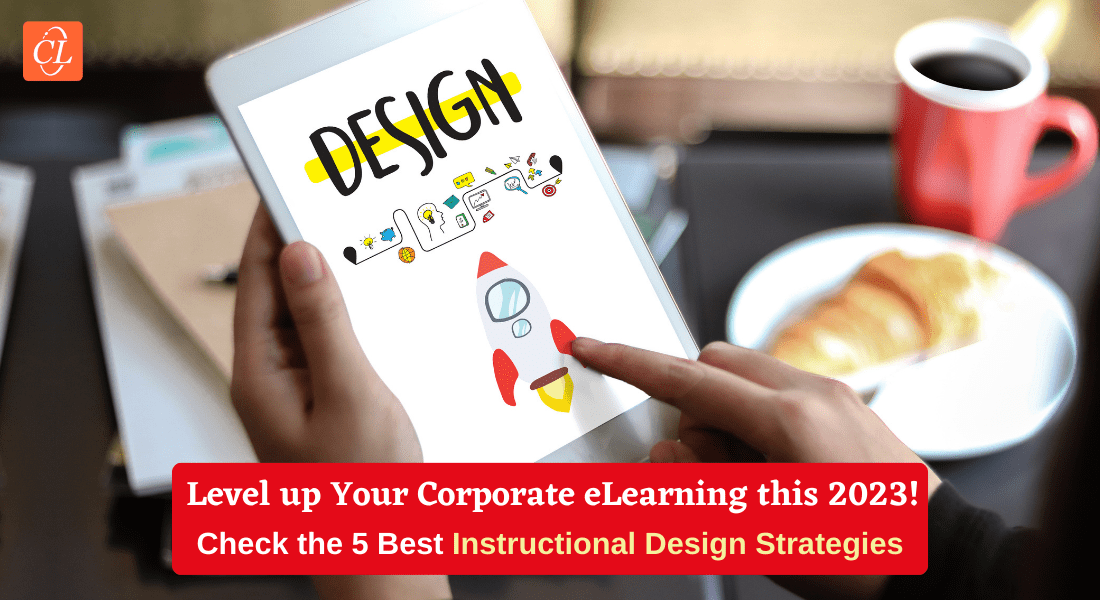4 Instructional Design Techniques to Transform Learning to Performance

According to eLearning Guild, transfer of learning is defined as “the application of previously learned skills, knowledge and/or attitudes to new situations encountered after a learning event”. In today’s global economy, the transfer of knowledge to performance on the job is the ultimate goal of any training program. Although, effective instructional design can take care of this, most training programs fall short of realizing this goal. Studies have suggested several factors that act as influencing components in knowledge transfer such as the training program, the organization, person/learner, and conditions that support the transfer process.
→ Download Now: Instructional Design Strategies to Design Engaging eLearning Courses
4 Instructional Design Techniques to Transform Learning to Performance
- Reward to motivate learners
- Countering to maintain learner attention
- Controlling the environment for better learning experience
- Helpful relationships to promote collaborative learning
Dr. Michael Allen, considered the father of modern interactive learning, in his book Designing Successful eLearning tries to explore instructional design strategies that help learners reach their ultimate performance goals.
Four Instructional Design Techniques for Knowledge Transfer
Allen proposes four instructional design techniques that can be applied in order to facilitate efficient knowledge transfer. In this blog, we will try to understand each of these four behavioral change techniques, namely reward, countering, controlling the environment and helping relationships.
1. Reward to motivate learners
Business and Economics Journal cites an article by Siriporn Yamnill and Gary N. McLean titled ‘Theories supporting transfer of training’ according to which employees satisfactorily transfer their learned skill when they are adequately rewarded.
All learners are motivated by the idea of getting recognized by their trainers and peers. This recognition inspires them to engage with the course content and perform at their best.
A few of the popular reward systems in eLearning are:
- Points: Points provide learners instant gratification upon accomplishing a desired outcome. For instance, in a corporate context, points can be awarded for achieving a certain assessment score or completing a particular number of online training hours. Incorporating a scoring system awarding points at regular intervals or at the end of each formative assessment as an instructional design technique helps ignite the learner’s drive in completing the training.
- Badges: Badges are visual reminders of a learner’s milestones in/during the training course. Badges are an ideal choice for infusing life into dull, text-heavy courses such as compliance training. Because they recognize achievements, using badges in training programs like these can also help reduce stress; telling the learners that they are making incremental progress and that the final goal is within sight.
- Leader boards: Leaderboards give learners the power to compete with their peers while building essential skills. Employees who complete the course the fastest can be awarded a higher place in the leaderboard. This reward system displayed at the end of an eLearning course taps into the learner’s competitive spirit.
- Progress Bars: Progress bars encourage a friendly competition among learners and shows them how fast they have progressed in the course.
Note: If your business has its own LMS, the reward system can be easily implemented. An added advantage of having an LMS is that the courses can be tracked and the evaluation metrics (such as completion rates of a learner/group, number of hours clocked by the target audience) could be used to generate reports, reports that provide valuable insight into the effectiveness of the training program.
2. Countering to maintain learner attention
According to Michael Allen, “Countering is just such a technique to prohibit thinking negatively and focus attention on undesirable behaviors by stimulating positive thoughts and initiating behaviors that are incompatible with bad behaviors”.
Corporate learners block out time from their busy schedule to attend an eLearning course. But no learner prefers to take a course at a stretch. A likely explanation for this behavior could be the drop in the attention spans of learners lately, which is getting shorter and shorter every day; and as a result, it’s becoming increasingly difficult to keep them engaged and hooked to the course.
So, how to help online learners stay focused? An instructional design strategy that works with the shorter attention span is time triggered pop-ups. To win back learner attention, a pop-up appears for learners who have been inactive. For example, after 60 seconds of inactivity, a character can pop-up asking the learner if they need any assistance with the current slide or with navigating to the next page.
3. Controlling the environment for better learning experience
The growing requirement for more flexible and quick training solutions to help corporate learners perform has already been underscored. However, given the busy schedules of employees it is also necessary to make learning accessible as per learner’s convenience; and to make sure that the knowledge gained away from the usual training settings (for example, a classroom building, a brick-and-mortar training center) still transfers to performance when the learners are on the job.
A few tips to control the workplace environment through eLearning:
Performance support tools:
Jane is a service technician for a manufacturing company. She is travelling to a client’s home to perform repairs on an electric gas vehicle. Her organization already has an eLearning program in place that trains all its service technicians how to inspect, maintain, and repair electric, gas, hybrid and alternative fuel vehicles. But in this case, Jane wants to be sure about all the steps she needs to follow in order to perform her job effectively.
Instead of forcing its employees to go through the entire eLearning course, Jane’s company has invested in creating microlearning videos that address the common problems that technicians might encounter while repairing alternative fuel vehicles and has hosted them on the company’s LMS. So, now, Jane has to simply pull out her tablet/smartphone, log in to the LMS and access the desired microlearning video in order to perform well at her task, all in quick time.
Remember that performance support tools can take the form of short videos, animations, infographics and PDFs to refresh and reinforce the learner’s knowledge in the subject matter. These job aids can also be customized as per the learning environment with suitable examples and exercises to fill the knowledge gaps.
Scenario-based learning (SBL):
Scenario-based learning is based on Lave & Wenger‘s (1991) situated learning theory which argues that learning best takes place in the context in which it is to be applied. In other words, knowledge is best acquired and better understood when positioned within its context. In SBL, learners are introduced to scenario based on real-world experiences. Here, they apply their subject knowledge, and critical thinking and problem solving skills, and witness the consequences of their decisions in real time.
SBL can be used in a wide range of contexts, but it works especially effectively when used to simulate real-world practice, providing opportunities which may be difficult for learners to experience in a course. Examples in a corporate context include simulated conversations between sales executives and customers to train sales people on crucial sales skills such as customer objection handling, do’s and don’ts of selling, among others.

Instructional Design Strategies to Design Engaging eLearning Courses
Design Learner-Centric eLearning
- Importance of ID Strategies in eLearning
- Parameters to Select the Right ID Strategy
- ID Strategies for Effective Results
- Case Studies
4. Helpful relationships to promote collaborative learning
A study of best practices in training transfer by Lisa A. Burke and Holly M. Hutchins based on evidence from American Society of Training and Development (ASTD) suggests that the best practices for bolstering knowledge transfer are ideally carried out in the design and development phase and involve active participation of learners and supervisors A helping relationship between supervisors and learners is an integral part of any training program. Most often, work life for an employee gets easier with a little help from the peers around her/him.
How can eLearning help?
With eLearning, learners learn from other learners — their experiences, ideas and skill sets — through online forums and chat rooms such as WebEx where they can chat, discuss topics and leave comments for everyone to see. A company can also utilize the collaborative eLearning features of their LMS and allow learners to quickly and conveniently communicate with their global peers when they have a query or concern.
A few tips proposed by Michael Allen with regard to helpful relationships:
- Make supervisors and subject matter experts aware that learners might seek encouragement either from them or each other. Also, make connecting to them easy through an LMS where learners can reach out and clarify their queries directly from the experts.
- Schedule enough time for one-on-one discussions with subject matter experts for senior employees who would prefer to learn through personal interaction with experts.
- People learn in-depth when they have to teach. Assign learners (for example, the top performers of a training course) to mentor other learners who are trying to acquire a new skill. When learners work in support of other learners, they enjoy the benefit of vicarious practice and build helpful relationships.
- Learners can also be provided with the email id of Subject Matter Experts.
Concluding remarks:
Transferring knowledge gained from training to performance on the job is one of the biggest challenges of any training. Leaving this gap open leads to poor employee performance, and eventually hurt the overall business results. However, a helpful understanding of the four instructional design principles proposed by Michael Allen and implementing them as part of the training strategy could go a long way in enabling this knowledge transfer.





![Top 3 Instructional Design Strategies That Pair Perfectly with Rapid eLearning [SlideShare]](https://blog.commlabindia.com/hubfs/Imported_Blog_Media/instructional-design-strategies-rapid-elearning-slideshare.png)